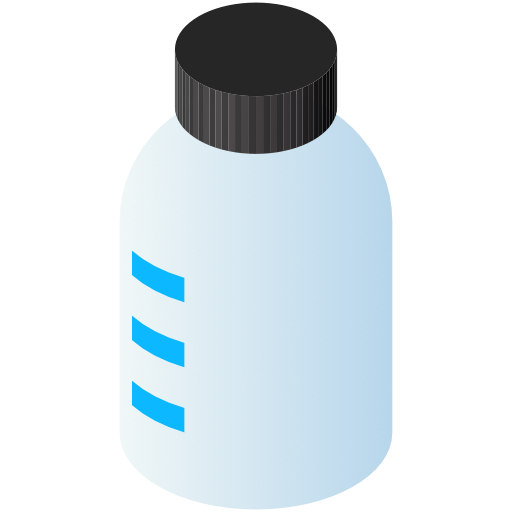Combination therapy
No results were found for your selected species
Emeprid
Active substance
ATC code
Species
Dogs and cats.
Indications
Symptomatic treatment of vomiting and reduced gastro-intestinal motility associated with gastritis, pyloric spasm, chronic nephritis and digestive intolerance to some drugs.
Dose to be administered and administration route
Oral use. Administer the product directly into the mouth.
0.5 to 1 mg of metoclopramide hydrochloride per kg of body weight per day administered as either:
2.5 to 5.0 mg/10 kg (equivalent to 2.5 to 5 ml/10 kg), twice daily
or
1.7 to 3.3 mg/10 kg (equivalent to 1.7 to 3.3 ml/10 kg), three times daily.
Oral administrations can be repeated with interval of 6 hours.
Adverse reactions
Dogs, cats:
|
Very rare (<1 animal / 10,000 animals treated, including isolated reports): |
Agitation1, Aggression1, Vocalisation1 Ataxia1, Abnormal movement NOS1, Tremor1, Prostration1 |
1These observed extrapyramidal effects are transient and disappear when treatment is stopped.
Reporting adverse events is important. It allows continuous safety monitoring of a veterinary medicinal product. Reports should be sent, preferably via a veterinarian, to either the marketing authorisation holder or the national competent authority via the national reporting system. See also the last section ‘Contact details’ of the package leaflet
Dispensing
POM-V - Prescription Only Medicine – VeterinarianSUMMARY OF PRODUCT CHARACTERISTICS
1. NAME OF THE VETERINARY MEDICINAL PRODUCT
Emeprid 1 mg/ml oral solution for dogs and cats
2. QUALITATIVE AND QUANTITATIVE COMPOSITION
Each ml contains:
Active substance:
Metoclopramide (as hydrochloride)....................................... 0.891 mg equivalent to metoclopramide hydrochloride .............................. 1 mg
Excipients:
Methyl parahydroxybenzoate (E218) ....................................... 1.3 mg
Propyl parahydroxybenzoate ................................................... 0.2 mg
For the full list of excipients, see section 6.1
3. PHARMACEUTICAL FORM
Oral solution.
Clear to slightly opalescent liquid, viscous, colourless to slightly amber.
4. CLINICAL PARTICULARS
4.1 Target species
Dogs and cats.
4.2 Indications for use, specifying the target species
Symptomatic treatment of vomiting and reduced gastro-intestinal motility associated with gastritis, pyloric spasm, chronic nephritis and digestive intolerance to some drugs.
4.3 Contraindications
Do not use in cases of known hypersensitivity to the active substance or to any of the excipients.
Do not use in cases of gastro-intestinal perforation or obstruction. Do not use in the case of gastro-intestinal haemorrhage.
4.4 Special warnings for each target species
None.
4.5 Special precautions for use
Special precautions for use in animals
The dosage must be adapted in animals with renal or hepatic insufficiency (due to an increase in the risk of side effects). Avoid administration to animals with epilepsy. The dosage should be carefully observed, especially in cats and small breed dogs.
Following prolonged vomiting, consideration should be given to fluid and electrolyte replacement therapy.
In case of vomiting after intake of the oral solution, maintain the usual interval between two administrations before administering the product again.
Special precautions to be taken by the person administering the veterinary medicinal product to animals
In case of accidental ingestion, especially by children, seek medical advice immediately and show the package leaflet or the label to the physician.
In case of accidental exposure by spillage onto the skin or eyes, wash immediately with abundant water. If adverse effects appear, seek medical advice immediately and show the package leaflet or the label to the physician. Wash hands after administration to the animal.
4.6 Adverse reactions (frequency and seriousness)
In some very rare cases, extrapyramidal effects (agitation, ataxia, abnormal positions and/or movements, prostration, tremors and aggression, vocalisation) have been observed after treatment of dogs and cats.
These observed effects are transient and disappear when treatment is stopped.
The frequency of adverse reactions is defined using the following convention: - very common (more than 1 in 10 animals displaying adverse reaction(s) during the course of one treatment)
- common (more than 1 but less than 10 animals in 100 animals)
- uncommon (more than 1 but less than 10 animals in 1,000 animals)
- rare (more than 1 but less than 10 animals in 10,000 animals)
- very rare (less than 1 animal in 10,000 animals, including isolated reports).
4.7 Use during pregnancy, lactation or lay
Laboratory studies in laboratory animals have not produced any evidence of teratogenic or foetotoxic effects. However, studies on laboratory animals are limited and the safety of the active substance has not been evaluated in the target species. The use of the product during pregnancy and lactation must be made according to the benefit/risk assessment carried out by the veterinarian.
4.8 Interaction with other medicinal products and other forms of interaction
In cases of gastritis, avoid the co-administration of anticholinergic drugs (atropine) as they may counteract the effects of metoclopramide on gastrointestinal motility.
In cases of simultaneous diarrhoea, there is no contra-indication to the use of anticholinergic drugs.
Concurrent use of metoclopramide with neuroleptics derivated from phenothiazine (acepromazine) and butyrophenones increases the risk of extrapyramidal effects (see section 4.6).
Metoclopramide can potentiate the action of central nervous system depressants. If used concurrently, it is advised to use the lowest dosage of metoclopramide to avoid excessive sedation.
4.9 Amounts to be administered and administration route
Oral use. Administer the product directly into the mouth.
0.5 to 1 mg of metoclopramide hydrochloride per kg of body weight per day administered as either:
2.5 to 5.0 mg/10 kg (equivalent to 2.5 to 5 ml/10 kg), twice daily or
1.7 to 3.3 mg/10 kg (equivalent to 1.7 to 3.3 ml/10 kg), three times daily.
Oral administrations can be repeated with interval of 6 hours.
4.10 Overdose (symptoms, emergency procedures, antidotes), if necessary
Most of the clinical signs reported after an overdosage are well known extrapyramidal side effects (see section 4.6).
In the absence of a specific antidote, it is recommended to offer a calm environment to the animal until extrapyramidal side effects disappear.
Metoclopramide being rapidly metabolised and eliminated, side effects generally disappear quickly.
4.11 Withdrawal period
Not applicable.
5. PHARMACOLOGICAL PROPERTIES
Pharmacotherapeutic group: propulsives. ATC Vet Code : QA03FA01
5.1 Pharmacodynamic properties
Metoclopramide is an original orthopramide molecule.
The anti-emetic action of metoclopramide is mainly due to its antagonist activity at D2 receptors in the central nervous system, preventing nausea and vomiting triggered by most stimuli.
The prokinetic effect on the gastro-duodenal transit (increase in intensity and rhythm of stomach contractions and opening of the pylorus) is mediated by muscarinic activity, D2 receptor antagonist activity and 5-HT4 receptor agonist activity at the gastro-intestinal level.
5.2 Pharmacokinetic particulars
Metoclopramide is rapidly and almost completely absorbed from the gastrointestinal tract following oral administration.
Metoclopramide is rapidly distributed into most tissues and fluids, crosses the blood-brain barrier and enters the central nervous system.
Metoclopramide is metabolised by the liver.
The elimination of metoclopramide is rapid, 65 % of the dose being eliminated within 24 hours in the dog, primarily by the urinary route.
6. PHARMACEUTICAL PARTICULARS
6.1 List of excipients
Methyl parahydroxybenzoate (E 218)
Propyl parahydroxybenzoate
Hydroxyethylcellulose
Sodium cyclamate
Saccharin sodium
Citric acid
Flavouring: sweet orange
Flavouring: apricot Purified water
6.2 Incompatibilities
In the absence of compatibilities studies, this veterinary medicinal product must not be mixed with other veterinary medicinal products.
6.3 Shelf life
Shelf-life of the veterinary medicinal product as packaged for sale: 3 years. Shelf life after first opening: 6 months.
6.4. Special precautions for storage
This veterinary medicinal product does not require any special storage conditions.
6.5 Nature and composition of immediate packaging
Nature of container:
Coloured glass vial type III. Child-proof stopper.
Pack size:
Cardboard box containing 1 vial of 125 ml.
6.6 Special precautions for the disposal of unused veterinary medicinal product or waste materials derived from the use of such products
Any unused veterinary medicinal product or waste materials derived from such veterinary medicinal product should be disposed of in accordance with local requirements.
7. MARKETING AUTHORISATION HOLDER
Ceva Animal Health Ltd
Explorer House
Mercury Park
Wycombe Lane
Wooburn Green
High Wycombe
Buckinghamshire
HP10 0HH
United Kingdom
8. MARKETING AUTHORISATION NUMBER
Vm 15052/4053
9. DATE OF FIRST AUTHORISATION
06 December 2010
10. DATE OF REVISION OF THE TEXT
September 2022

Approved: 13 September 2022

| Art. Nr. | 15052/5048 |
|---|---|
| EAN | 3411111960027 |
 TRUSTED SOURCE
TRUSTED SOURCE








